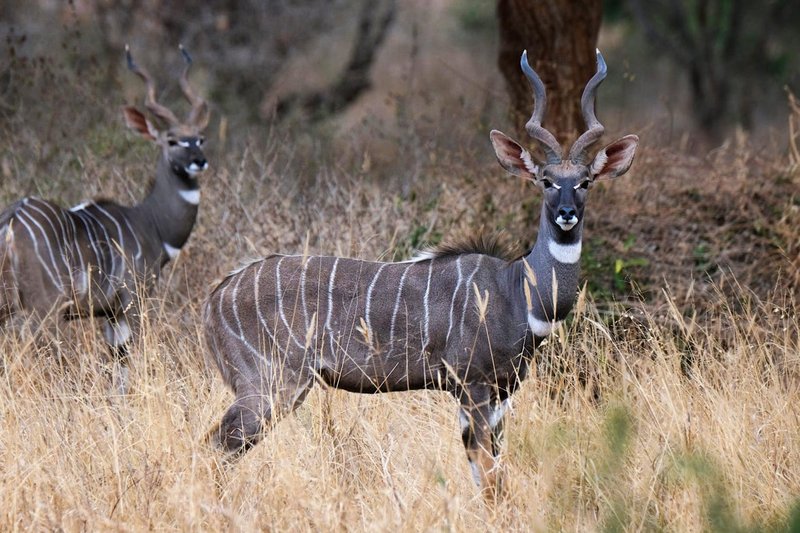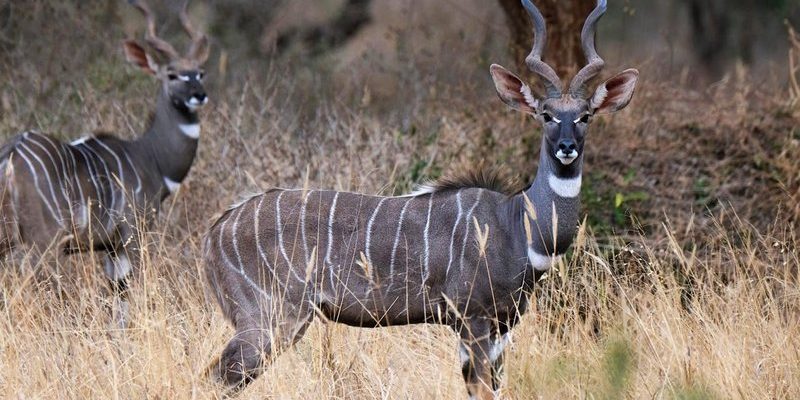
Lesser kudus are like the ultimate survivalists. They embody a mix of clever adaptations and sheer resilience, allowing them to endure extreme conditions where food and water can be scarce. If you’ve ever found yourself in a tough situation and had to think on your feet, you’ll appreciate how these animals make the most of what they have. Let’s dive into the world of lesser kudus and discover how they manage to not just survive, but flourish under adversity.
Understanding the Lesser Kudu
To really grasp how lesser kudus survive, it helps to know a bit about them. Lesser kudus are medium-sized antelopes, known for their stunning spiral horns and striking coloration—think rich browns and whites that blend perfectly with their surroundings. They’re primarily found in eastern and southern Africa, usually choosing scrubby forests and woodlands as their home.
These creatures are not just pretty faces; they have unique features that help them adapt to their environment. For instance, their slender bodies and long legs allow them to maneuver quickly through dense foliage. But there’s more to it than just looks. Lesser kudus are also known for being quite shy and elusive. This behavior is a strategy to avoid predators, and it’s one of the many ways they ensure their survival.
Adapting to Limited Water Sources
One of the toughest challenges for the lesser kudu is finding water. In many of their habitats, water sources can be few and far between. So, how do they cope? Well, here’s the thing: lesser kudus are excellent at extracting moisture from their food. They primarily feed on leaves, fruits, and shoots, which contain essential water.
When times get tough, they can also adjust their eating habits, opting for more succulent plants that provide the hydration they need. It’s almost like being a chef who knows how to whip up a gourmet meal from whatever is in the pantry, adapting to the seasons and what’s available. Plus, they often graze during cooler parts of the day—early mornings or late afternoons—when the sun isn’t blazing down, helping them conserve energy and moisture.
Utilizing Camouflage and Stealth
While lesser kudus have some physical traits that help them thrive, their survival strategy also heavily relies on being sneaky. Their coat blends seamlessly with the dappled sunlight filtering through the trees. This natural camouflage is a strong defense against predators like lions and leopards.
But it’s not just their appearance that aids in survival; it’s also their behavior. Lesser kudus are naturally shy and prefer to stay hidden, which means they spend a lot of time being still. They often stand motionless, waiting for the danger to pass, making it difficult for potential threats to spot them. Imagine trying to play hide-and-seek in a forest; that’s how adept they are at staying out of sight!
The Importance of Social Structure
Lesser kudus are generally solitary but can also be found in small groups. This social structure plays a vital role in their survival. When they’re with others, they can benefit from collective vigilance. If one kudu spots danger, it can alert the rest. This is like having a built-in alarm system, helping them react quickly to threats.
Moreover, these animals have established hierarchies within their groups. Males typically have territories they defend, while females often stay with their young. This social dynamic is crucial for breeding and raising offspring, ensuring that the next generation is prepared to face the challenges ahead. It’s like a carefully coordinated team effort, where everyone has a role to play in ensuring survival.
Finding Food During Scarcity
When food resources are limited, lesser kudus show remarkable adaptability. They are selective feeders, meaning they’re picky about what they eat—prioritizing nutrient-rich leaves and shoots. Their digestive systems are also designed to handle tough plant matter, allowing them to maximize the nutrients they can extract from their food.
During the dry season, when food is harder to come by, lesser kudus can travel longer distances to find greener pastures. They’re like seasoned travelers, knowing where to go and what to look for. Sometimes, they might even dig through the ground to find edible roots and tubers! Their resourcefulness is impressive, showing just how well they can adjust their diets to meet the environmental conditions.
Reproductive Strategies and Survival
Reproduction is another key aspect of survival. Lesser kudus typically breed once a year, with females giving birth to a single calf after a gestation period of about seven months. This slow reproductive rate might seem like a disadvantage, but it’s part of a strategy to ensure the survival of the young.
Newborn calves are hidden away in dense vegetation for the first weeks of life, making them less visible to predators. The mother will often move between feeding and returning to check on her young. This strategy maximizes the calf’s chances of survival in a challenging environment. It’s like having a safety net—instead of rushing to have many offspring, they focus on nurturing and protecting the few they do have.
The Role of Seasonal Changes
Lesser kudus have a close relationship with the seasons. During the wet season, vegetation is lush and plentiful, providing easy access to food. However, as the seasons change and the dry spell sets in, these animals must adjust their habits accordingly.
They might shift their range to follow the growth of new plants or alter their feeding times. This adaptability is crucial for their survival, allowing them to thrive even when conditions change. It’s a bit like changing up your routine when you hit a roadblock—you find new ways to make things work!
In a world filled with challenges, lesser kudus stand out as extraordinary survivors. Their ability to adapt to harsh environments, utilize camouflage, and maintain social structures showcases their resilience. They remind us that survival is not just about strength but also about clever strategies and adaptability.
So, the next time you hear about lesser kudus, think of them as nature’s quiet warriors—graceful yet tough, always finding ways to thrive in a world that often tests their limits. They’ve proven that even in the face of adversity, there’s always a way to make it through. Just like us, they adapt, change, and find ways to push through, and that’s something worth celebrating.

